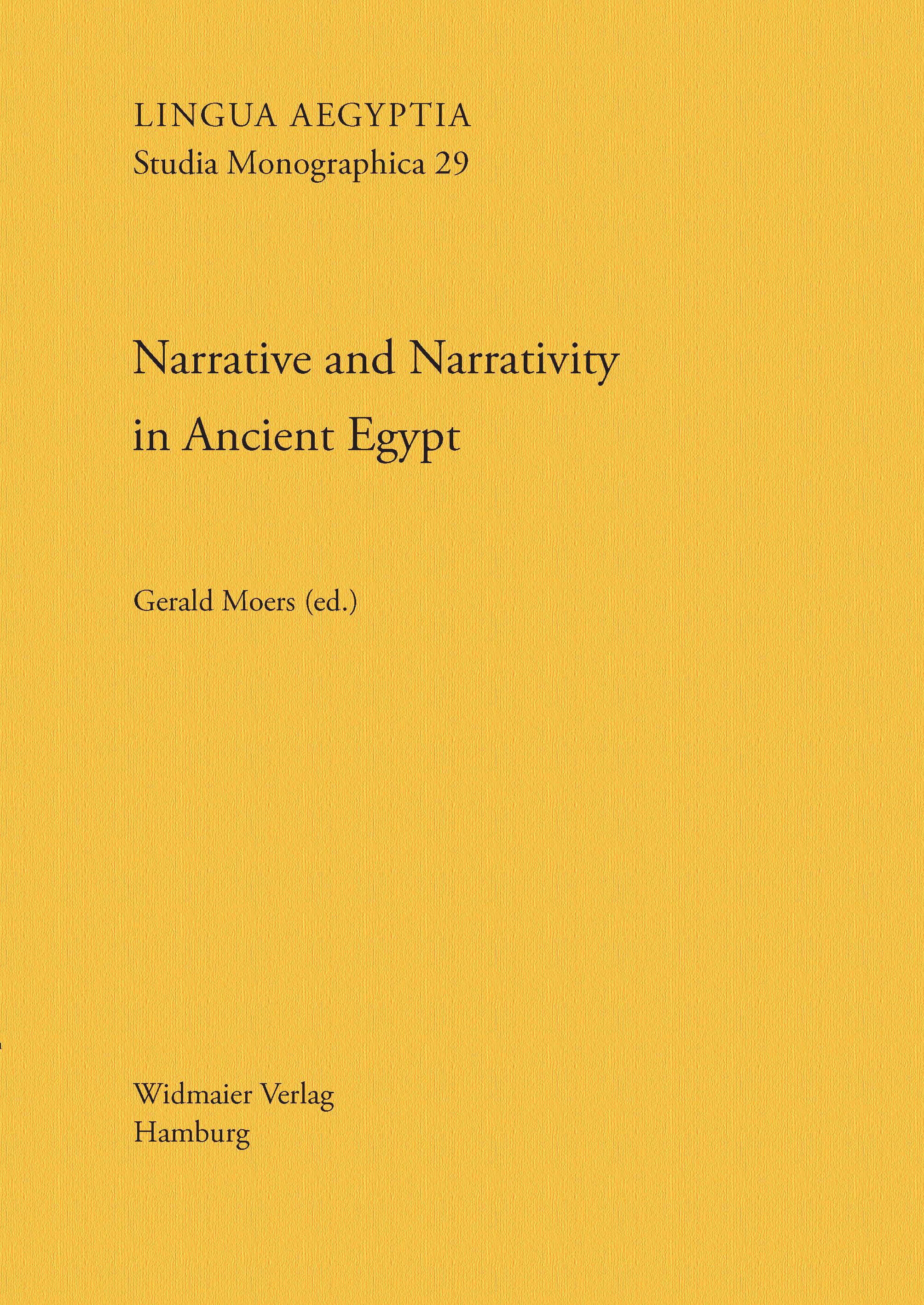The volume collects the result of the project Altägyptische Erzählungen in Texten und Bildern: Ägyptologische Perspektiven auf zentrale Axiome einer historischen Text- und Bildnarratologie. It presents a sound methodological perspective for an analysis of the medial diversity and the historical uniqueness of the Ancient Egyptian narrative culture at the interface of contemporary narratological theories and Egyptological practise. A methodological introduction by Gerald Moers and four case studies on categories of narrative artefacts as diverse as texts, images, and tombs argue in favour of appropriately adjusting narratological theories – instead of just using them – with respect to the historically specific differences of the Egyptian narrative behaviour. Based on a cognitive approach that defines human experience as generally framed in a narrative manner, the contributions define narrative as a phenomenon that is neither restricted to nor defined by one medium that would be considered paradigmatically narrative. The study by Camilla di Biase-Dyson on the Egyptian term s.Dd, which has so far been understood as to refer to linear verbal narrative, argues for a much more complex and sophisticated semantics of the term as defining a specifically Egyptian understanding of what narrative is. In a similar manner, the analysis of certain spells from the Pyramid Texts by Kristina Hutter and Dina Serova establishes the existence of narrative coherence in a genre of texts that has so far been considered as being non-narrative by definition. The study of Claus Jurman on Old Kingdom tombs shows that their integrated compilation of texts, images, statuary, and architecture results in non-linear but complex multimodal narratives. Gerald Moers, in his analysis of exemplary genre-scenes from Ramesside ostraca, shows that even some so-called monochronic images that depict precisely one moment in time and have thus traditionally been said to be a-temporal and non-narrative by definition, often have a clearly structured temporal program and can thus be considered autonomous narratives.

Open Acess Download
studMonTerms of Use:

This work is licensed under the Attribution-NonCommercial-NoDerivs 4.0 International License.
Download of Narrative and Narrativity in Ancient Egypt: Case Studies on Narrative Difference in Various Media, Lingua Aegyptia Studia Monographica 29 as Open Access
Gerald Moers (ed.)
Narrative and Narrativity in Ancient Egypt: Case Studies on Narrative Difference in Various Media
Hamburg, published in December 2023
doi: https://doi.org/10.37011/studmon.29
viii+304 p., colour and b&w illustrations, paperback, 600 g.
ISSN: 0946-8641
ISBN (Paperback): 978-3-943955-29-3
ISBN (PDF): 978-3-943955-92-7
- Price 55.00 €
- Reduced price for subscribers to LingAeg (Journal) 45.00 €
- NOTICE:+add to cart
Choose your subscription type when entering your billing information.
All prices incl. VAT 7% and excl. shipping. Orders from non-EU customers and from VAT registered customers (EU) will be exempt from German VAT.
Description
Egyptological narratology as historical narratology: A brief history and some (im-)possibilities
DOI: https://doi.org/10.37011/studmon.29.01
Open Acess Download
Terms of Use: This work is licensed under the Attribution-NonCommercial-NoDerivs 4.0 International License
Download of Egyptological narratology as historical narratology: A brief history and some (im-)possibilities as Open Access
What does sDd tell? Reformulating narratological concepts in Egyptology
DOI: https://doi.org/10.37011/studmon.29.02
Open Acess Download
Terms of Use: This work is licensed under the Attribution-NonCommercial-NoDerivs 4.0 International License
Download of What does sDd tell? Reformulating narratological concepts in Egyptology as Open Access
Non, je ne regrette rien! A narratological essay on life writing, life telling, and life reading in Old Kingdom Egypt
DOI: https://doi.org/10.37011/studmon.29.03
Open Acess Download
Terms of Use: This work is licensed under the Attribution-NonCommercial-NoDerivs 4.0 International License
Download of Non, je ne regrette rien! A narratological essay on life writing, life telling, and life reading in Old Kingdom Egypt as Open Access
Ägyptische monochrone Einzelbilder als Erzählungen: Eine Fallstudie
DOI: https://doi.org/10.37011/studmon.29.04
Open Acess Download
Terms of Use: This work is licensed under the Attribution-NonCommercial-NoDerivs 4.0 International License
Download of Ägyptische monochrone Einzelbilder als Erzählungen: Eine Fallstudie as Open Access
Appendix
„Erzählte Räume“ in nicht-narrativen Texten: Der Schauplatz als Erzählkategorie am Beispiel von PT 412
DOI: https://doi.org/10.37011/studmon.29.05
Open Acess Download
Terms of Use: This work is licensed under the Attribution-NonCommercial-NoDerivs 4.0 International License
Download of „Erzählte Räume“ in nicht-narrativen Texten: Der Schauplatz als Erzählkategorie am Beispiel von PT 412 as Open Access